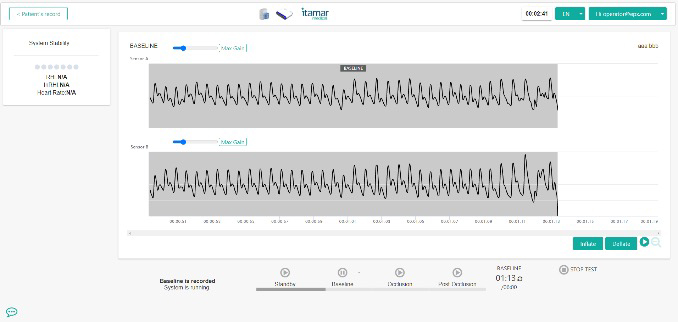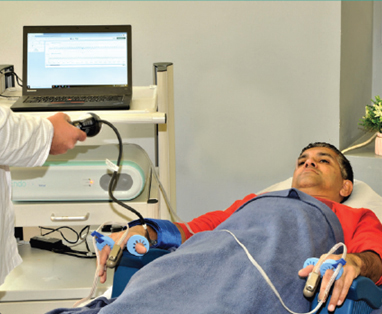EndoPAT®
EndoPAT Simply Assesses Vascular Health
The EndoPAT® X Solution
The EndoPAT® X test
- Non-invasive diagnosis aid and measurement of early endothelial damage In-office EndoPAT® test.
Results in 16 just minutes
- Easy to Use. Fully
automated, both
operator and interpreter
independent. Results in
16 just minutes.

EndoPAT® X - The new generation of EndoPAT® X
SOLUTION
- Modern design
- Supplied computer with embedded software to facilitate studies management
INTERPRETATION
- User-friendly interface for intuitive and
comfortable use - Supplied build-in features/timer for easy test run and control
COMPATIBILITY WITH ENDOPAT 2000
- Possibility to import and to analyze the tests performed with EndoPAT 2000
- Same features and operation process as with EndoPAT 2000
- Same report and data as with EndoPAT 2000


----------
HIGHLIGHTS
Peripheral Arterial Tonometry Signal
Endothelial Dysfunction
Clinical Uses and Implications
Peripheral Arterial Tonometry Signal
- Peripheral Arterial Tonometry technology is a non-invasive window to the cardiovascular system and autonomic nervous system. Peripheral Arterial Tone signal is a proprietary technology used for non-invasively measuring arterial tone changes in peripheral arterial beds.The Peripheral Arterial Tonometry is measured from the fingertip by recording finger arterial pulsatile volume changes.
Based on Peripheral Arterial Tonometry technology, the non-invasive EndoPAT system comprises a measurement apparatus that supports a pair of modified plethysmographic
sensors.The unique feature of the Peripheral Arterial Tonometry bio-sensors is that they impart a uniform sub-diastolic pressure field to the distal two-thirds of the fingers including their tips.

Endothelial Dysfunction
For more than a decade endothelial dysfunction has been recognized by the medical community as the critical junction between risk factors and clinical disease. It is the earliest detectable stage of cardiovascular disease. Furthermore, it is treatable, and unlike the atherosclerotic plaque that it causes, it is even reversible.
The Endothelium is the inner lining of all blood vessels, considered a “super organ” that regulates key natural biological processes that ensures homeostasis, amongst them inflammation, oxidative stress
and auto-immune disease.
The endothelium is the thin layer of flat, smooth cells that line the inner walls of the 62,000 miles of
blood vessels in the body.
As major negative lifestyle factors begin to increase, oxidative stress damages the endothelial tissue throughout the body by stiffening the veins and arteries, leading to a host of medical concerns, including erectile dysfunction, kidney disease, peripheral vascular disease, heart attack, and stroke.
Numerous studies positioned Endothelial Dysfunction as the “ultimate risk of risk factors” and is the earliest clinical detectable stage of cardiovascular disease.
Clinical Uses and Implications
Atherosclerosis, the build-up of plaques within the walls of the arteries, is caused when the endothelial cells that line the thousands of miles of blood vessels become dysfunctional. We also know that endothelial dysfunction is caused by the same heart risks that initially damage the endothelium.
Based on new clinical findings, many leading cardiac researchers now believe that endothelial dysfunction, considered as “the ultimate risk of the risk factors”, is a disease unto itself and that this disease is what causes damage to the vessels of the heart, not atherosclerosis. Furthermore, this dysfunction is triggered by an inflammatory response to the damaged endothelium. Atherosclerosis, and the subsequent plaques and arterial blockages and heart attacks that it causes, are manifestations of this endothelial dysfunction.

Non-invasive
Validated vs. invasive gold standard
(intracoronary infusion of acetylcholine)
Reliable & Reproducible
Immediate, automatically calculated test results,
interpreter independent
Easy to Use
Short (15-minute), convenient (performed at the fingertip),
office-based test, operator independent endothelial dysfunction test

